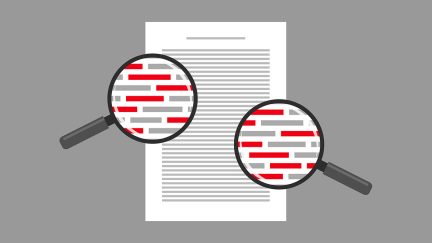Get more! Sign up for PLANSPONSOR newsletters.
What the Potential Shutdown of Biden’s Loan Forgiveness Plan Could Mean for Plan Sponsors
Student loan repayment will likely resume later this year, providing even more reason for plan sponsors to offer student debt benefits to employees.
As the fate of President Joe Biden’s student loan forgiveness program is in the Supreme Court’s hands, the question moves to whether plan sponsors will feel more pressure to offer student loans benefits to their employees.
Regardless of the Supreme Court’s ruling, Jay Schmitt, a principal in Strategic Benefits Advisors, says plan sponsors should aim to provide a comprehensive benefits package that includes student loan repayment assistances, as it will help to attract and retain employees.
“People are still going to have student loan debt, even after whatever happens with the Supreme Court ruling,” Schmitt says.
Biden’s plan to cancel up to $20,000 in student loan debt for 40 million eligible borrowers faces a handful of lawsuits, as well as skepticism from several conservative high court justices about whether the government has the authority to distribute millions of dollars in relief on federally held loans.
If Biden’s plan survives the challenges, plan sponsors may question the value of offering their own student loan benefits, predicts David Amendola, senior director and intellectual capital leader for benefits advisory and compliance at WTW.
But as student loan debt in the United States totals $1.76 trillion, and Biden’s plan would only forgive a portion of this amount, Amendola says the problem is not going away, and additional benefits offered by plan sponsors could serve as a lifeline for employees struggling with student debt.
The SECURE 2.0 Act of 2022 includes a provision that permits employers to make matching contributions to an employee’s retirement account when the employee makes “qualified student loan payments.” The intention is that people would not have to forgo retirement savings while repaying student debt.
This provision applies to 401(k), 403(b), SIMPLE IRAs and governmental 457(b) plans and is meant to benefit those who were not previously participating in their retirement plans. However, the provision is only effective for plan years beginning after December 31, 2023.
Meanwhile, payments on federal student loans have been on pause since the start of the pandemic in 2020 but are set to resume 60 days after June 30, 2023, or 60 days after the Supreme Court’s decision—whichever comes first.
Once people are required to start paying off their student loans again, Amendola predicts the demand for employer-provided student loan benefits will increase. He says the new matching program from SECURE 2.0 is a “great benefit.”
Between now and the end of the year, there are several student loan-related benefits that plan sponsors can offer to participants, although Schmitt argues that many of the current programs will likely not make a significant dent in employees’ student debt.
Many companies, including large employers like Amazon, Apple and Walmart, offer tuition reimbursement programs for employees who are also enrolled in a degree program. Depending on the company, employees could have their education costs paid up front or get reimbursed after they complete their degree.
Amendola says he has seen increased interest from employers to adopt such programs, but they can come at a high cost.
Jeff Holdvogt, a partner in the McDermott Will & Emery law firm, said at a PLANSPONSOR webinar on student loan debt benefits that another benefit currently available is the educational assistance program available through the CARES Act.
The IRS program, under Internal Revenue Code Section 127, allows employers to provide up to $5,250, tax– free, to employees each year for certain qualified educational assistance.
But in an interview this month, Schmitt points out that there are people who have up to $100,000 in student loan debt. While offerings like the IRS program, or others that allow employees to convert paid time off into funds for debt repayment, are attractive benefits, he argues they may only have a small impact on employees’ student debt.
“It’s a really tough situation, because there is a limited pool of money on the employer side, [and] benefits cost money,” Schmitt says. “A lot of financial wellness programs have come online in the last five to 10 years that can help you make budgets and stick to budgets, and that’s what the conversation needs to be about.”
Amendola adds that another potentially valuable student loan benefit is the income-driven repayment program offered by the federal government, called the Revised Pay As You Earn Plan. New regulations were announced for the REPAYE Plan in January, and Amendola says the program could be “incredibly impactful” for lower-paid workers who are eligible.
REPAYE bases a borrower’s student loan payments on their gross income and family size. Borrowers who do not pay off their loans in full by the end of their repayment term can receive student loan forgiveness on the remaining balances.
As an example, Starbucks recently launched a student loan management benefit, through Tuition.io, which will help student loan debtors manage and optimize their payments with resources that include income-based repayment options and loan refinancing.
Amendola says these kinds of programs can significantly help employers attract and retain talent, improve employee well-being in the long term and further an organization’s diversity, equity and inclusion goals, as minority employees tend to be the ones most burdened by student debt.

